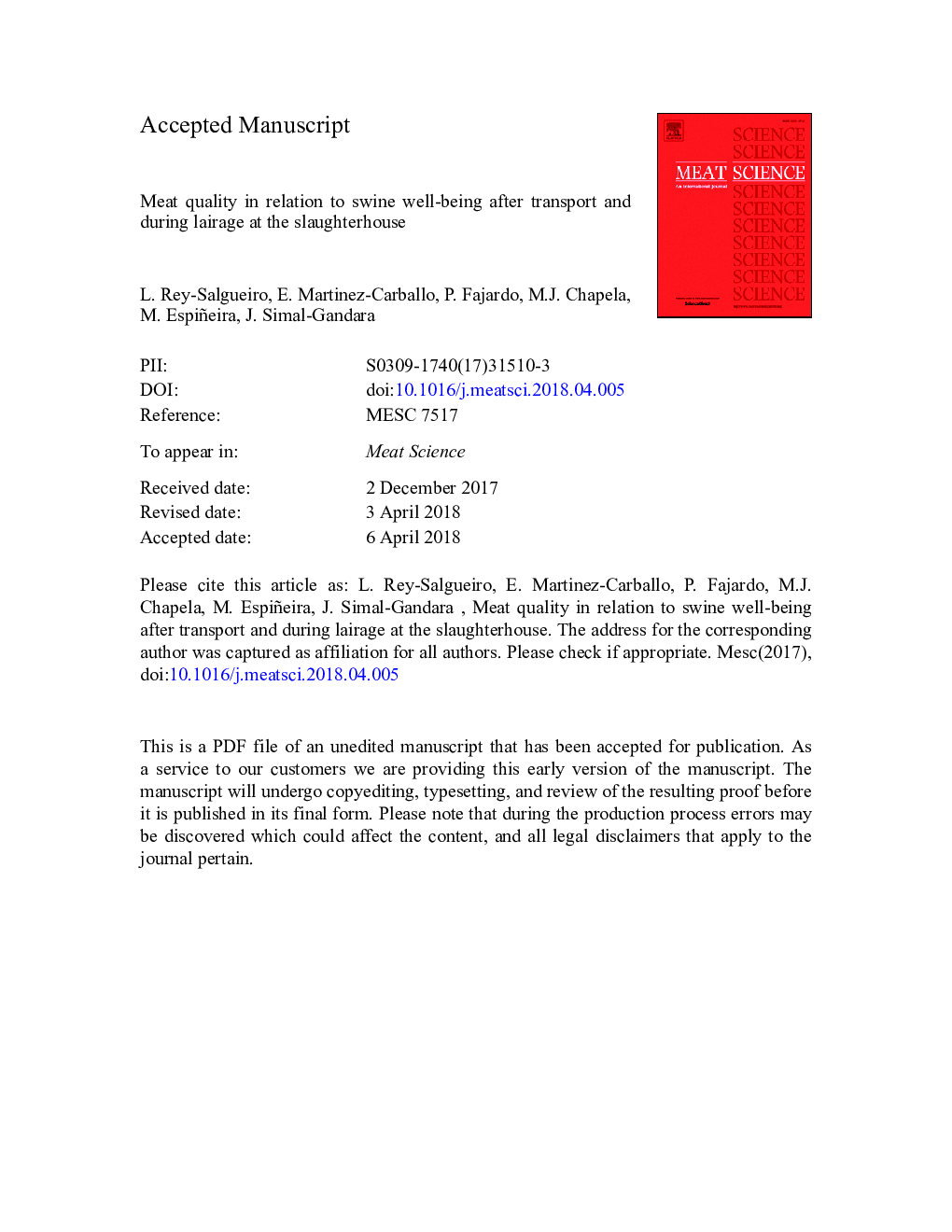| Article ID | Journal | Published Year | Pages | File Type |
|---|---|---|---|---|
| 8502736 | Meat Science | 2018 | 26 Pages |
Abstract
Cortisol and corticosterone in saliva were evaluated as pig stress biomarkers, using pig genotype (Duroc, L62 or Pietrain) and lairage time in the slaughterhouse (0, 2.0, 4.0 or 6.0â¯h) as controlled variables. Although some pigs were found to be carriers of stress susceptibility, all were healthy heterozygous individuals. Pre-slaughter transport increased cortisol levels in saliva above 3.0â¯Î¼g/L (medium stress), and 4.0â¯h of lairage in the slaughterhouse raised them above 6.0â¯Î¼g/L, whereas corticosterone concentrations exceeded 4â¯Î¼g/L, which are suggestive of high stress. The highest cortisol levels were detected in the Duroc genotype. Other factors such as food deprivation, background noise, the presence of a large number of animals waiting to be slaughtered, mixing with unfamiliar animals or recent mixing of genders may also influence stress. Corticosterone proved a reliable indicator of high stress only. Meat quality from the pig breeds studied was not affected by lairage in the slaughterhouse for up to 6.0â¯h.
Keywords
Related Topics
Life Sciences
Agricultural and Biological Sciences
Food Science
Authors
L. Rey-Salgueiro, E. Martinez-Carballo, P. Fajardo, M.J. Chapela, M. Espiñeira, J. Simal-Gandara,
